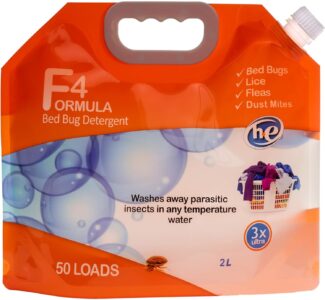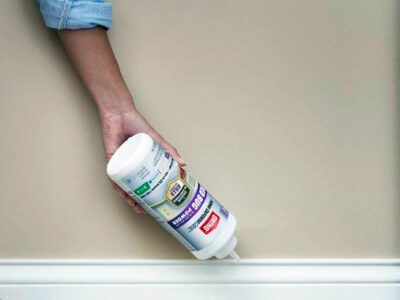Discovering bed bugs in your home is alarming enough, but finding bed bugs on clothes adds another layer of concern. If you’re noticing night-time bug bites and stains on your bedding, these invasive pests may have found their way into your dresser drawers and clothes closet. The good news is that eliminating bed bugs from clothing is simpler than treating your entire home. This comprehensive guide will show you exactly how to get rid of bed bugs on clothes effectively and prevent re-infestation through heat treatment, proper containment, and specialized handling techniques for different fabric types.
- Understanding How Bed Bugs Infest Clothing
- Effective Methods to Kill Bed Bugs in Clothes
- Heat Treatment Options for Different Types of Clothing
- Understanding Temperature Requirements for Killing Bed Bugs
- Common Mistakes When Treating Bed Bugs on Clothes
- Common Myths About Bed Bug Treatment
- When Bed Bugs Have Spread Beyond Clothing
- Keeping Your Clothes Bed Bug-Free
- Cost Comparison of Treatment Methods
- Frequently Asked Questions
Understanding How Bed Bugs Infest Clothing
Bed bugs are skilled hitchhikers that thrive wherever people are present. They can easily attach to your belongings and travel with you from one location to another.
Travel Risk
You don’t need to have bed bugs in your home already to end up with an infestation. These pests can hitch a ride on your luggage from hotels, friend’s homes, or public transportation – even five-star accommodations aren’t immune.
Clothing Appeal
Bed bugs are drawn to dark spaces, making the folds of your clothes an ideal hiding spot. When they don’t have access to better hiding places, they’ll readily migrate into your clothing.
 Even those with immaculate homes can unknowingly transport bed bugs back from travels or visits. Being vigilant about prevention is key, especially when staying in unfamiliar places.
Even those with immaculate homes can unknowingly transport bed bugs back from travels or visits. Being vigilant about prevention is key, especially when staying in unfamiliar places.
Preventing Bed Bugs While Traveling
Travel Smart
Consider packing light-colored clothing when traveling, as bed bugs and their signs are easier to spot on lighter fabrics. Light-colored, hard-shell luggage also makes visual inspection easier.
How to Identify Bed Bugs on Clothes

Visual Evidence
Look for tiny rust-colored spots (bed bug excrement), small blood stains, or the bugs themselves hiding in seams and folds of clothing.
Bug Identification
Adult bed bugs are apple seed-sized, flat, and reddish-brown. Nymphs are smaller and lighter colored, while eggs are tiny (1mm) and pearl-white.
Common Hiding Spots
Check cuffs, collars, waistbands, pockets, and seams of clothing—especially items stored near beds or in rarely disturbed dresser drawers.
Detection Tip
Bed bugs are more likely to infest clothes that are left undisturbed for long periods. Check seasonal clothing, stored items, and rarely worn pieces first when searching for an infestation.
Effective Methods to Kill Bed Bugs in Clothes
When dealing with bed bug-infested clothing, there are two primary goals to focus on:
- Preventing bugs already in your clothes from spreading to other areas
- Protecting clean clothes from becoming reinfested
Important Tip
The good news is that you don’t need special insecticides or toxic chemicals to treat your clothing. Heat treatment through proper washing and drying is highly effective against bed bugs at all life stages.
The Complete Washing and Drying Process
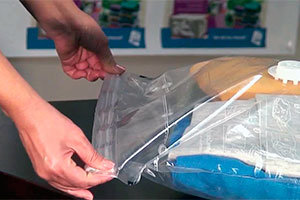 To effectively eliminate bed bugs from your clothing, follow these critical steps:
To effectively eliminate bed bugs from your clothing, follow these critical steps:
- Carefully seal infested clothes in plastic bags where they’re located
- Wash clothes in hot water, maintaining high temperature for at least 30 minutes
- Transfer washed clothes directly to the dryer without letting them touch surfaces
- Dry clothes at high heat for a minimum of 30 minutes
- Place clean clothes in new, sealed plastic bags if your home still has bed bugs
When transferring clothes to the washer, avoid placing the bag on the floor or handling clothes individually. Instead, position the bag opening inside the washer and push clothes directly in without touching them. After emptying, seal the bag inside another bag before disposal to prevent escaping bugs.
Hot Water Treatment
Temperature Requirements
Heat is your most powerful weapon against bed bugs. Use the hottest water setting that’s safe for your fabrics when washing infested clothing.
Time Requirements
Maintain hot water temperature for at least 30 minutes (you may need to run two consecutive wash cycles) for maximum effectiveness.
Detergent Role
Add regular laundry detergent as you normally would. Remember that it’s the sustained heat, not the detergent, that kills the bed bugs.
The Science of Heat Treatment
Bed bugs have a protective exoskeleton that shields their internal organs. When exposed to sustained high temperatures (at least 122°F/50°C for 30+ minutes), this protection fails and kills them effectively.
Unlike chemical treatments that may face resistance issues, heat treatment remains consistently effective against all bed bug life stages when properly applied.

Understanding Common Appliance Settings
| Appliance Setting | Typical Temperature | Effectiveness |
|---|---|---|
| Washing Machine “Hot” | 130-140°F (54-60°C) | Effective for all life stages |
| Washing Machine “Warm” | 90-110°F (32-43°C) | Generally ineffective |
| Dryer “High” | 135-150°F (57-65°C) | Highly effective for all life stages |
| Dryer “Medium” | 125-130°F (52-54°C) | Effective with extended time (45+ min) |
Most residential washing machines’ “hot” setting and dryers’ “high” setting will reach the necessary lethal temperatures.
Laundry Additives: What Works and What Doesn’t
| Product | Effectiveness | Notes |
|---|---|---|
| Regular Laundry Detergent | Low | Cleans clothes but doesn’t kill bed bugs. The hot water does the actual killing. |
| Bleach | Medium | Can kill on direct contact but poses significant risks to clothing. Not necessary with heat treatment. |
| Specialized Bed Bug Treatments | Varies | Most still rely on hot water and high heat drying to be effective. |
| Dryer Sheets | None | Does not kill or effectively repel bed bugs. May mask odors, giving false security. |
Many products claim to kill bed bugs when added to laundry, but most offer little benefit beyond the hot water itself:
Specialized Bed Bug Laundry Treatments
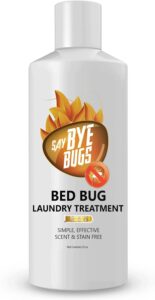
SayByeBugs
- Advertised as “All-Natural”
- Still requires heat in washing or drying
- Limited ingredient disclosure
Consumer Warning
While these products claim to be effective, most still recommend washing in hot water or drying at high temperatures—suggesting that the heat remains the primary killing mechanism. Some products may not be permitted in all states due to regulation concerns.
Heat Treatment Options for Different Types of Clothing
Standard Clothing
Hot water wash + high heat drying (at least 30 minutes each)
Dryer-Safe Delicates
Skip washing, go straight to high-heat drying for 30+ minutes
Dry-Clean Only
Heat treatment if possible, then professional dry cleaning in sealed bags
Using the Dryer for Non-Washable Items
Be careful with items that may ball up in the dryer, as interior fabrics might not reach the necessary temperature. For these items, extend the drying time.
Handling Dry-Clean Only Garments
- First place them in a dryer on high heat for at least 30 minutes if the fabric can tolerate it
- Transport them to the dry cleaner in a sealed plastic bag
- Inform the dry cleaner about the bed bug issue as a professional courtesy
Harnessing Solar Heat
Solar Treatment Method
In warm, sunny climates, solar heat can be used as an alternative treatment:
- Place infested clothes in a sealed clear plastic bag
- Position the bag in direct sunlight for several hours
- Use an infrared thermometer to monitor the internal temperature
- Ensure the temperature throughout the bag reaches at least 122°F (50°C) for 30 minutes
Remember that items in the center of the bag will heat more slowly than those near the surface.
Other Effective Heat Treatment Options

Clothing Steamers
- Reaches 180-220°F (82-104°C)
- Great for spot treatment
- Works on delicate fabrics
- No chemicals needed
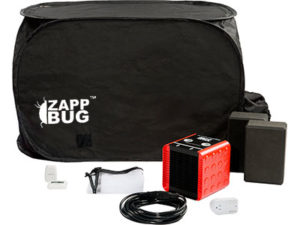
Portable Heat Chambers
- Treats items up to 150°F (65°C)
- Handles multiple items at once
- Kills all life stages
- Good for non-washable items
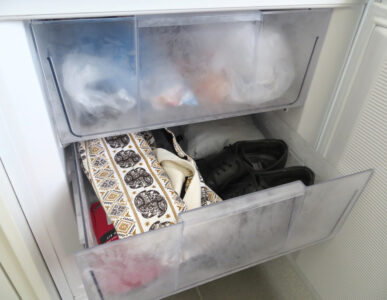
Freezer Treatment
- Requires 0°F (-18°C) for 4+ days
- Alternative for heat-sensitive items
- No chemicals required
- Less effective than heat
Safety Warning
When using steamers, maintain a distance of at least 12 inches from delicate fabrics to prevent damage. For portable heat chambers, always follow manufacturer instructions to prevent fire hazards or damage to contents.
Understanding Temperature Requirements for Killing Bed Bugs
| Temperature | Exposure Time | Effectiveness |
|---|---|---|
| 122°F (50°C) | 30+ minutes | Kills adults and nymphs reliably, may require longer for eggs |
| 140°F (60°C) | 30 minutes | Kills all life stages including eggs |
| Cold water soak | 24 hours | Kills only adults and nymphs, eggs survive |
Bed bugs progress through three major life stages:
Eggs
Most resistant to treatment. Require highest temperatures or longest exposure to heat for elimination.
Nymphs
Immature bed bugs that have hatched but not reached adulthood. More susceptible to heat than eggs.
Adults
Fully mature bed bugs capable of reproduction. Will die at lower temperatures than required for eggs.
To prevent reinfestation, all three life stages must be eliminated completely.
How Often to Treat Clothing During an Infestation
Active Infestation
During an active infestation, treat all clothing you wear daily after each use. Continue this process until no bed bug activity has been observed for at least 14 days.
Stored Clothing
Treat all stored clothing once, then seal in airtight containers or vacuum bags. Re-treat only if the sealed storage is compromised or signs of infestation appear.
Post-Treatment
After the main infestation is controlled, continue treating any questionable items and maintain vigilance with regular inspections for at least 8 weeks.
Bed bug eggs hatch in 6-10 days, which is why repeated treatments are essential for complete elimination.
Alternative for Delicate Fabrics
For extremely delicate items that cannot withstand hot water washing but may tolerate dryer heat:
- Soak in cold water for 24 hours (kills adults and nymphs but not eggs)
- Dry at high temperature for at least 30 minutes
- Repeat the process several times to catch newly hatched bugs
How Cold Water Works
Extended cold water immersion drowns adult bed bugs and nymphs by preventing them from reaching the surface for air. Unlike eggs (which are waterproof), adult bugs cannot survive complete submersion beyond 24 hours.
Treatment Schedule
Since eggs survive cold water treatment, repeat the process every 7-10 days for at least three cycles to catch newly hatched nymphs before they mature and reproduce.
Common Mistakes When Treating Bed Bugs on Clothes
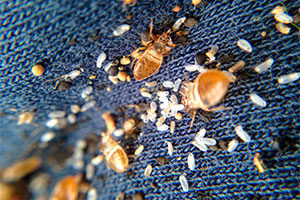
Shaking Out Clothes
Never shake out potentially infested clothing as this can scatter bed bugs and eggs throughout your home, worsening the infestation.
Insufficient Heat
Using “warm” instead of “hot” water or “low” instead of “high” dryer settings may leave eggs and some bugs alive after treatment.
Inadequate Exposure Time
Cutting short the recommended 30+ minute treatment time, especially in dryers, can result in treatment failure and continued infestation.
- Removing clothes from sealed bags anywhere except directly into the washing machine
- Mixing treated and untreated clothing during the laundering process
- Returning clean clothes to infested drawers or closets without proper isolation
- Relying on pesticides or other chemical treatments without proper heat treatment
- Assuming one treatment is sufficient for a significant infestation
Common Myths About Bed Bug Treatment

Do Dryer Sheets Repel Bed Bugs?
The Myth
Dryer sheets placed with clothing or under mattresses will repel bed bugs and keep them away.
The Reality
Bed bugs may dislike the scent but will simply relocate to nearby areas rather than leaving entirely.
The Danger
Relying on dryer sheets can mask the musky odor bed bugs emit, leading you to believe the problem is solved while the infestation grows.
A dryer sheet under your mattress won’t prevent bugs from inhabiting other parts of your bed, and sheets in clothing won’t protect the entire garment. This false sense of security can allow infestations to worsen while you believe you’re protected.
When Bed Bugs Have Spread Beyond Clothing
If bed bugs have infested more than just your clothing, you’ll need a comprehensive approach to eradicate them from your home: Begin by vacuuming all affected areas thoroughly, including carpets, upholstery, and cracks in furniture, to remove both bed bugs and their eggs. After vacuuming, it’s essential to wash all fabrics in hot water and dry them on a high heat setting to kill any remaining pests. For those looking to understand how to eliminate bed bugs safely, consider using natural remedies or hiring a professional pest control service that employs environmentally friendly methods.
Home Treatment Coordination
Time your clothing treatments to coincide with whole-home treatments for maximum effectiveness. Treat all clothing immediately before a professional treatment to prevent bed bugs from using clothing as a refuge during home treatment.
Keeping Your Clothes Bed Bug-Free
Key Takeaway
While eliminating bed bugs from your entire home requires comprehensive treatment, keeping your clothes bed bug-free is relatively straightforward with proper heat treatment and containment procedures.
Cost Comparison of Treatment Methods
| Treatment Method | Estimated Cost | Effectiveness | Best For |
|---|---|---|---|
| Home Washing/Drying | $2-5 per load (utilities) | High | Washable everyday clothing |
| Professional Dry Cleaning | $10-30 per item | Medium-High | Delicate, non-washable items |
| Portable Heat Chambers | $200-300 (one-time purchase) | High | Large volumes or bulky items |
| Specialized Laundry Additives | $15-30 per bottle | Low-Medium | Supplementary treatment only |
| Steamer | $40-150 (one-time purchase) | Medium | Spot treatment of specific areas |
Cost-Saving Tip
If using laundromats, save money by sorting and treating only clothing that has potentially been exposed to bed bugs rather than treating your entire wardrobe. Consider purchasing sealable storage containers as a one-time investment rather than continuously buying disposable plastic bags.
Frequently Asked Questions
Can bed bugs survive in the washing machine?
Bed bugs cannot survive a hot water wash cycle that maintains temperatures of 122°F (50°C) or higher for at least 30 minutes. However, they can survive cold or warm water washes, which is why hot water and subsequent high-heat drying are essential. The tumbling action alone won’t kill them—it’s the sustained high temperature that proves fatal to all life stages including eggs.
How long can bed bugs live on clothes without a host?
Bed bugs can survive 2-5 months on clothing without feeding, depending on temperature and humidity conditions. Cooler temperatures extend their survival time, which is why long-term storage of treated clothing should be in sealed containers. Even in unfavorable conditions, bed bugs can enter a semi-dormant state that allows them to survive until a host becomes available.
Can bed bugs travel on the clothes I’m wearing?
Yes, bed bugs can hitchhike on clothing you’re actively wearing, though they prefer to feed during times of inactivity (like sleeping) and then retreat to hiding spots. They’re less likely to remain on clothing that’s being worn and moving throughout the day. However, they may hide in seams, cuffs, or collars of clothing worn for extended periods, especially if you’ve been sitting or resting in an infested area.
Will dry cleaning kill bed bugs?
Yes, commercial dry cleaning will kill bed bugs due to the chemicals and heat used in the process. However, inform your dry cleaner about the infestation first, and transport items in sealed bags to prevent spreading bugs to their facility or other customers’ clothing. The solvents used in dry cleaning are toxic to bed bugs, and the pressing process applies heat that further ensures elimination.
Can I spray my clothes with insecticides to kill bed bugs?
This is not recommended. Most insecticides aren’t designed for application on clothing and could cause skin irritation or other health issues. Heat treatment through washing and drying is safer and more effective for treating clothes. Additionally, many bed bugs have developed resistance to common insecticides, making heat treatment the more reliable option for elimination.
